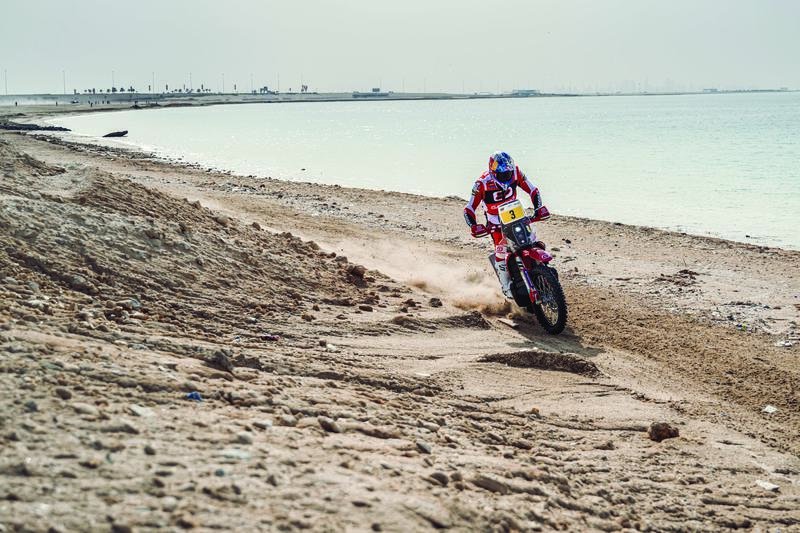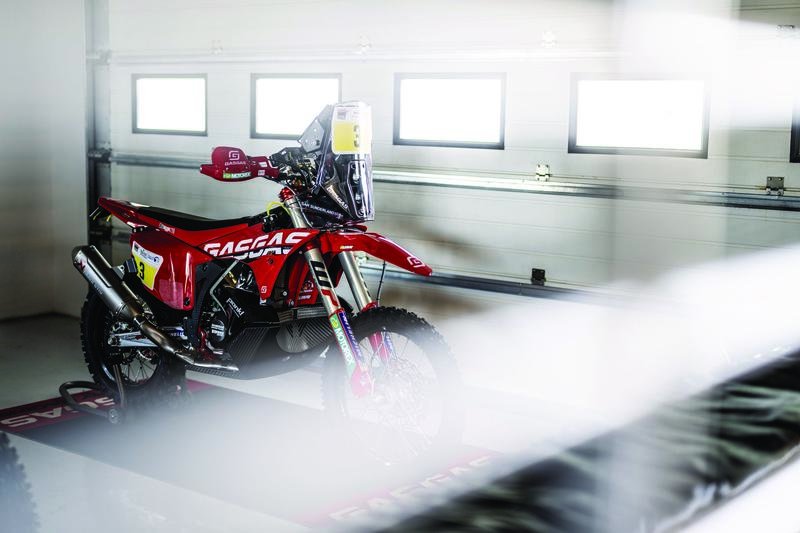

Test: GasGas EC 2021 range
|
GasGas has taken an ambitious new approach under the KTM umbrella, becoming the group's 'fun' brand, resulting in a mix of more economical models, without depriving riders of the pure performance that one expects from Austrian society. In this article, we'll talk about our driving impressions at the national media launch held recently at Shooters Hill in New South Wales. From the moment we arrived for the race presentation, everything about the GasGas brand emphasizes community, origins and - again - fun! It's about involving the whole family in the atmosphere, while continuing to draw inspiration from the races.
The next day we were able to test GasGas' new range at the Learning to Fly MX complex, and set off to explore an enduro loop done by Ben Grabham around the general terrain, which included a pine forest and the good ol' Australian bush on a number of different terrains. GasGas has indeed changed hands several times, but none were more significant than this more recent acquisition from the KTM Group in 2019, bringing the Spanish-born brand in line with KTM and Husqvarna Motorcycles. As a result, there has been a complete overhaul of the enduro roster. So what was the point for the KTM group to recruit GasGas to join KTM and Husky? Essentially, the goal was to attract new riders to the sport at a more cost-effective entry point, while maintaining, arguably, the performance expected of its already-incumbent Austrian platform. With that in mind, GasGas' 2021 enduro fleet isn't as extensive as other brands in the KTM group. In contrast, GasGas focuses on motorcycles aimed at introducing beginners to the sport. So you won't find large capacity 500cc or 450cc models.
You might think it's just a red KTM, but there are several features that are unique to GasGas. You'll immediately notice a few distinctive features that set them apart from the base platform, namely a rear suspension lift, front and rear Braktec brakes, and a Braktec hydraulic clutch. What is common to all brands of the KTM group is mass centralization, light weight and outstanding performance. All ECs share the same chassis, starting with the frame, constructed from laser-cut, red-lacquered chrome-molybdenum steel, and the hollow cast aluminum swingarm. The GasGas range features 22mm offset forged triple clamps, offering three-position handlebar adjustments: fore, mid and rear, allowing riders of all sizes to set the Neken handlebars exactly to their preference. The WP Xplor 48mm USD fork is designed in two parts, with the springs and compression in the left leg of the fork, while the rebound is on the right. Also, a WP Xact rear shock is linked to an articulated mechanism similar to the Husqvarna's, but different from the KTM's PDS. The fork and shock both feature internal adjustments specific to the GasGas line.
Other features that make the models stand out are electric start, tool-less air cleaner access and ODI grips that allow for cam throttle adjustment, which we didn't get a chance to try. but it is an interesting point that we would like to explore further. It turns out that the Braktec brand has also been taken over by the KTM group, which has significant expertise in braking and clutch development. If you weren't familiar with trials/dirt bikes, you have every right to doubt their performance. I know I was curious how they would work, having never used them before and barely being able to remember the brand. Other than the feel of the lever on your finger, it's hard to tell the difference between these brakes and more traditional Brembos. Since this is a brand new bike, there may be changes as the bike comes in, but the first impression was good. Front and rear brakes are powerful, smooth, predictable and work well on the trail. Likewise, the Braktec hydraulic clutch works as expected. The clutch feel is light and precise, consistent throughout the ride. It features a Damped Diaphragm Steel (DDS) clutch using a single diaphragm spring, which is different from the more common coil spring design and makes maintenance easier. The GasGas enduro range has an 8.5 liter translucent tank, which makes it easy to see how much fuel you have left, but if you were ever having such a good time you didn't notice how much fuel you have consumed, there is also a level sensor. Connecting you to the ground are CNC-machined hubs with lightweight spokes and silver alloy wheels, which are fitted with Maxxis MaxxEnduro mid-blend tyres. These were a highlight for me and even a marked improvement over the previous generations I had driven on. In terms of bodywork, the GasGas is very similar to the KTMs for obvious reasons, but it is nevertheless slightly different. The cockpit of the bike is neutral and quite suitable for my average size thanks to its flat saddle, which allows me to move around comfortably without any problems. The saddle also offers more grip than I had expected at first sight. Two-stroke models feature fuel-injected engines based on TPI technology, making them highly efficient. Another feature of the two-stroke engine is the crankshaft balancer, which significantly reduces vibration. There's a six-speed transmission and collectively it's an impressive package with a wide range of power characteristics. For me, the EC 250 stood out, as I usually prefer larger displacement two-strokes. It seemed to have plenty of low-end power, which meant that in tighter terrain you had to use more of the gearbox and usually less of the clutch. The power of the EC 250 certainly made it easier to ride in general. The EC 300, which I usually prefer, is still going strong, and like most big-barrel two-strokes, it likes it to be upshifted and dragged a bit more. Things get rushed on this bike, the most powerful of the GasGas enduros, but it handles all the power the engine can throw at it. As for the four-strokes, they are perfectly suited to GasGas' target clientele, being two of the easiest motorcycles to ride, while offering everything one expects from a 250F or even a 350. My preference may lean to one side or the other, depending on terrain and conditions. The EC 350F has strong power off the start and it keeps pulling all the way through, so in many ways you can be a bit more consistent and less precise than on the EC 250F. It can help you out of difficult situations. However, if you are the type of rider who likes to touch the neck of the bike, the EC 250F is probably the one for you. Although both of these EC-F models weigh almost the same (250 lbs for the 250 versus 220 lbs for the 350), the EC 250F is definitely a bit more nimble. For all models, the tried and tested WP fork and shock combination proved comfortable and comfortable in all the terrain we tested, never failing even when we didn't get the chance to ride. to experiment with terrain that is too difficult or technical. Overall, the models in the 2021 GasGas EC lineup are stylish and sure to stand out, while delivering the kind of ride quality we've come to expect from the KTM Group for many years now and saving you around $1300 depending of the model! Plus, you'll stand out from the crowd on these dark red enduro variants. |
|
Specifications Engine type (EC 250F): 349.7cc, liquid-cooled, single-cylinder, four-stroke. Bore/stroke (EC 350F): 88mm x 57.5mm Engine type (EC 250F): 249.9 cc, liquid-cooled, single-cylinder, four-stroke. Bore/stroke (EC 250F): 78mm x 52.3mm Engine type (EC 300): 293.2cc, liquid-cooled, single cylinder, two-stroke Bore/stroke (EC 300): 72mm x 72mm Engine type (EC 250): 249cc, liquid-cooled, single-cylinder, two-stroke Bore/stroke (EC 250): 66mm x 72mm Transmission: six -speed Starter: electric Clutch: Hydraulic Braktec Front suspension: WP Xplor 48mm fork Rear suspension: WP Xact shock absorber Front brake: Braktec twin-piston caliper, 260mm disc Rear brake: Braktec single piston caliper, 220mm disc Tyres: Maxxis MaxxEnduro Weight (EC 350F): 106.8kg (without fuel) Weight (EC 250F): 106.6kg (without fuel) Weight (EC 300): 106.2kg (without fuel) Weight (EC 250): 106.2kg (without fuel) Availability: April 2021 For more information: www.gasgas.com.au |









